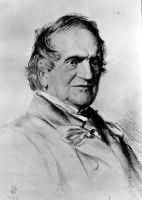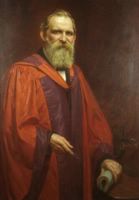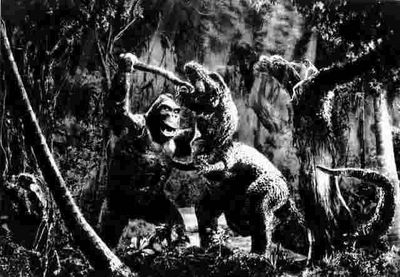The Chicxulub Asteroid Impact and Mass Extinction at the Cretaceous-Paleogene Boundary. 2010. P. Schulte, et al. Science 327: 1214 – 1218.
 New Gods (c) DC Comics
New Gods (c) DC ComicsResponding to challenges to the hypothesis that an asteroid impact caused a mass extinction on Earth 65 million years, a panel of 41 scientists re-analyzed data and provided new evidence, concluding that an impact in Mexico was indeed the cause of the mass extinction.
Thirty years ago, Luis Alvarez, Jan Smit and their coworkers suggested a large meteorite slammed into Earth 65 million years ago and caused one of the most severe mass extinctions in Earth's history, ending the age of the dinosaurs. In 1991, a more than 200-kilometer-wide impact crater was discovered in Yucatan, Mexico, that coincided with the extinctions. Since then, the impact hypothesis has gained overwhelming acceptance within the scientific community.
Still in recent years, a few scientists have challenged this hypothesis. To address their claims, a panel of 41 experts from Europe, the U.S., Mexico, Canada and Japan provide new data from the analysis of ocean drilling and continental sites and re-analyze the relevant literature in the field, including the most recent research. They find that alternative hypotheses are inadequate to explain the abrupt mass extinction and that the impact hypothesis has grown stronger than ever.

The fossil record clearly shows a mass extinction event across the planet at about 65.5 million years ago. Because this change is so dramatic, geologists use it to define the end of the Cretaceous period and the start of the Paleogene period (formerly called the Tertiary period). They refer to the time of the extinctions as the K-Pg boundary.
Some scientists have suggested that the Chicxulub ("
chik-shoo-loob") impact in Mexico happened 300,000 years before the K-Pg boundary and therefore, came too early to have been the major cause of extinctions.
They point to deposits at sites around the Gulf of Mexico with a layer of tiny glass-like blobs of melted impact material that, according to their interpretation, was deposited at about 300,000 years before the K-Pg boundary mass extinction. As an alternative, they suggest the Deccan Traps —unusually active volcanoes in what is now India—led to global cooling and acid rain, and were the major cause of mass extinction, not the Chicxulub impact in Mexico.
However, the reviewers find that what appears to be a series of layers neatly laid down over 300,000 years near the impact site were actually violently churned and then dumped in a thick pile in a very short time. Models suggest the impact at Chicxulub was a million times more energetic than the largest nuclear bomb ever tested. An impact of this size would eject material at high velocity around the world, cause earthquakes of magnitude >10, continental shelf collapse, landslides, gravity flows, mass wasting and tsunamis and produce a relatively thick and complex sequence of deposits close to Chicxulub.
The reviewers find that despite evidence for relatively active volcanism in India, marine and terrestrial ecosystems showed only minor changes within the 500,000 years before the K-Pg boundary. Then, precisely at the boundary, there was an abrupt and major decrease in productivity (a measure of the sheer mass of living things) and species diversity.
link
CHICXULUB IMPACT QUICK FACTS:
•The asteroid was about 12 km wide. In the UK, the city of Bristol, the Isle of Wight and Jersey are all about that size.
•The asteroid was about 10,000 times more massive than the total mass of the human world population. In other words, the asteroid was about 3x10^15 kilograms (or about 3x10^12 tonnes).
•At impact, the asteroid is estimated to have been traveling at 20 km per second , roughly 20 times the speed of a rifle bullet.
•The impact released about a billion times more energy than the atomic bombs dropped on Hiroshima and a million times larger than the largest nuclear bomb ever tested.
•The initial impact crater was about 100 km wide and 30 km deep.
•Impacts of this size on Earth are thought to happen on average about once every hundred million years.












































